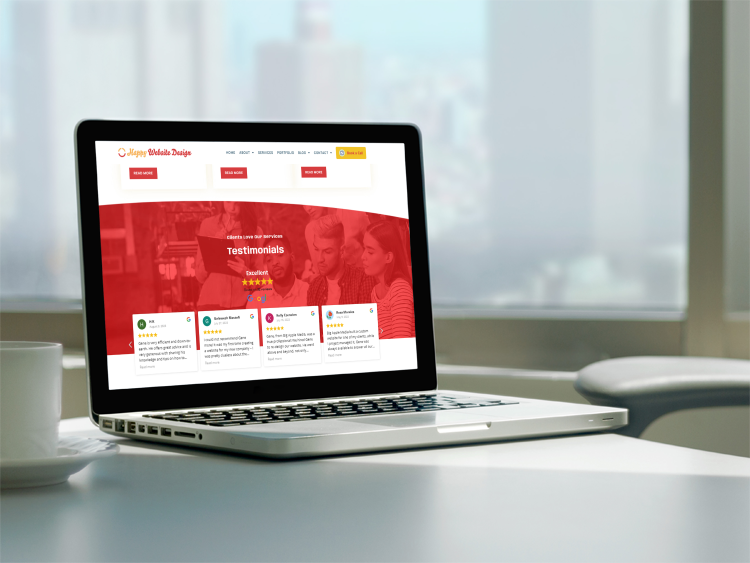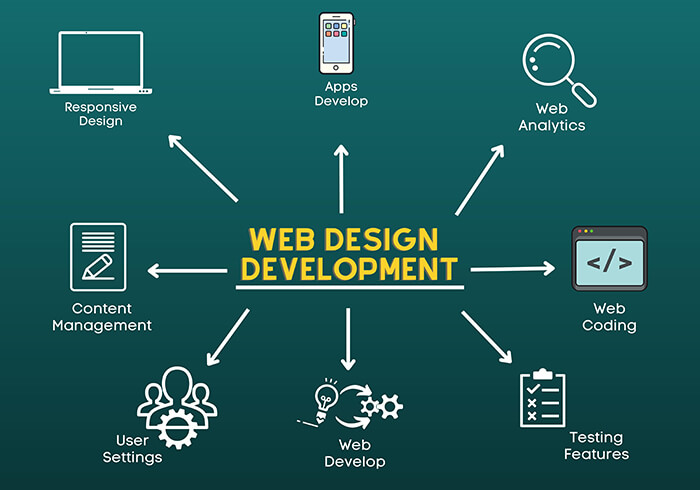Produce a Well Balanced Online Experience With Alternative Website Design
In today's digital landscape, producing a well balanced online experience with all natural website design is necessary for meeting the varied needs of individuals - website development consulting. This approach highlights the assimilation of aesthetic appeals, functionality, and functionality, permitting designers to craft web sites that operate as interconnected communities. By focusing on ease of access and lining up material strategy with user choices, organizations can substantially boost engagement. Comprehending the nuanced concepts that underpin this method is crucial for accomplishing sustained success. What aspects must be taken into consideration to ensure that every element of a web site adds meaningfully to the total customer experience?
Comprehending Alternative Website Design
What does it indicate to embrace an alternative technique to web style? A holistic technique stresses the integration of various elements to create a cohesive on-line experience. This method considers not only visual facets however also functionality, use, and the psychological effect of the website on its customers. By watching a web site as an interconnected environment, designers can ensure that every part-- visual design, web content, navigation, and interactivity-- works sympathetically to fulfill customer requirements.

Integrating a holistic point of view entails understanding the target audience and their details requirements, choices, and actions. It requires an evaluation of just how users communicate with various elements of the site and exactly how these communications affect their overall experience. This technique additionally considers the wider context in which the internet site operates, including brand identification, marketing methods, and affordable landscape.
Ultimately, an alternative technique to website design results in a much more appealing and efficient on-line visibility. By prioritizing the individual trip and cultivating a smooth experience across all touchpoints, designers can produce web sites that not just record focus yet also encourage sustained interaction and satisfaction. This comprehensive technique promotes long-lasting success and promotes brand commitment.
Key Concepts of User Experience

One necessary principle is usability, which stresses the value of simple navigation and clear capability. Internet sites must be simple to navigate, permitting customers to situate info rapidly. This is closely linked to uniformity, where style elements, such as switches and food selections, ought to continue to be uniform throughout the site to boost experience and convenience of use.
An additional significant principle is responses, making sure that users are notified concerning their interactions. Whether via visual hints or alerts, feedback strengthens a feeling of control and fulfillment. Additionally, the principle of power structure dictates that details ought to be arranged logically, assisting users with content efficiently.
Last but not least, emotional style plays a vital role in UX. By evoking favorable feelings through appearances and interactions, developers can create unforgettable experiences that cultivate user commitment - website development consulting. By adhering to these principles, internet developers can develop holistic experiences that reverberate with customers and satisfy their purposes
Importance of Access
Accessibility is a critical aspect of website design that guarantees all individuals, regardless of their abilities or disabilities, can engage with electronic material efficiently. By prioritizing access, internet designers develop inclusive environments that cater to diverse individual requirements, enhancing overall customer experience.
An accessible website complies with established standards, such as the Internet Material Availability Guidelines (WCAG), which recommend practices like providing message options for non-text material, guaranteeing sufficient shade comparison, and allowing keyboard navigating. These techniques not only serve customers with handicaps, such as aesthetic or auditory problems, yet likewise benefit various other individual groups, including those with situational constraints or older grownups.
Furthermore, the importance of access extends past ethical factors to consider; it likewise impacts organization results. An inclusive web site can reach a more comprehensive audience, inevitably causing increased involvement and conversions. Furthermore, accessibility compliance reduces the danger of legal consequences associated with discrimination.

Integrating Material Approach
Creating an inclusive digital atmosphere naturally causes the need of a durable web content strategy that aligns with individual demands. An effective web content method works as the backbone of all natural web style, making certain that info is not just next page available but likewise appealing and appropriate. It requires a deep understanding of the target audience, including their preferences, behaviors, and potential barriers to Source accessibility.
To incorporate a web content approach properly, companies have to focus on user-centric material development. This can be achieved through comprehensive target market study, which notifies the sorts of content that will reverberate with customers. Furthermore, material should be structured logically, making use of clear headings, bullet factors, and concise language to enhance readability.
Collaboration throughout teams-- design, development, and web content-- is important to make certain that the material technique is cohesively executed. Normal audits of material performance will help in refining strategies, making certain the material stays fresh and straightened with individual expectations. Ultimately, integrating multimedia components can improve user communication, accommodating varied knowing designs while promoting inclusivity. By focusing on a cohesive web content technique, companies can create a well balanced online experience that promotes involvement and ease of access for all users.
Measuring Success and Engagement
While a well-executed material technique creates the foundation of all natural website design, determining success and engagement is critical for evaluating its performance and leading future improvements. Key performance indicators (KPIs) such as web page views, bounce prices, and average session duration supply measurable understandings right into user behavior. These metrics highlight which material resonates most with individuals and where prospective rubbing factors might exist.
Moreover, qualitative procedures, such as individual comments and studies, can provide deeper understandings right into user complete satisfaction and engagement levels. Tracking social networks interactions and conversion prices likewise helps gauge the performance of material in driving desired activities, whether that be acquisitions, sign-ups, or information demands.
Using devices like Google Analytics, heatmaps, and A/B screening can enhance understanding of customer interaction patterns and preferences. This information enables internet designers and material strategists to repeat on their designs, making certain that the on the internet experience remains user-centered and straightened with company purposes.
Final Thought
Finally, a well balanced online experience through all Going Here natural website design requires the assimilation of looks, functionality, and use. By prioritizing customer needs and accessibility, developers can create interconnected environments that enhance interaction and satisfaction. A well-aligned web content strategy additionally contributes to a natural individual experience, while regular feedback systems are essential for promoting commitment. Ultimately, this thorough approach not only boosts user fulfillment yet likewise reinforces brand name identity in a progressively competitive digital landscape.